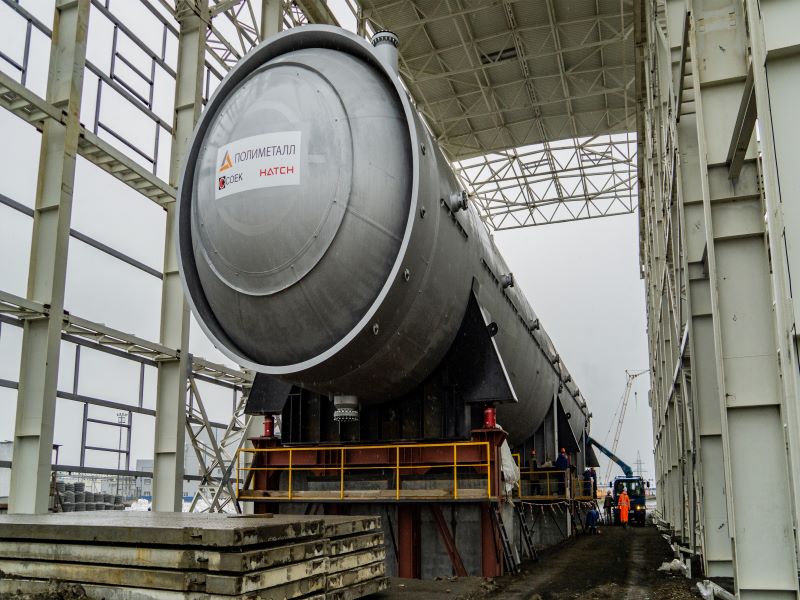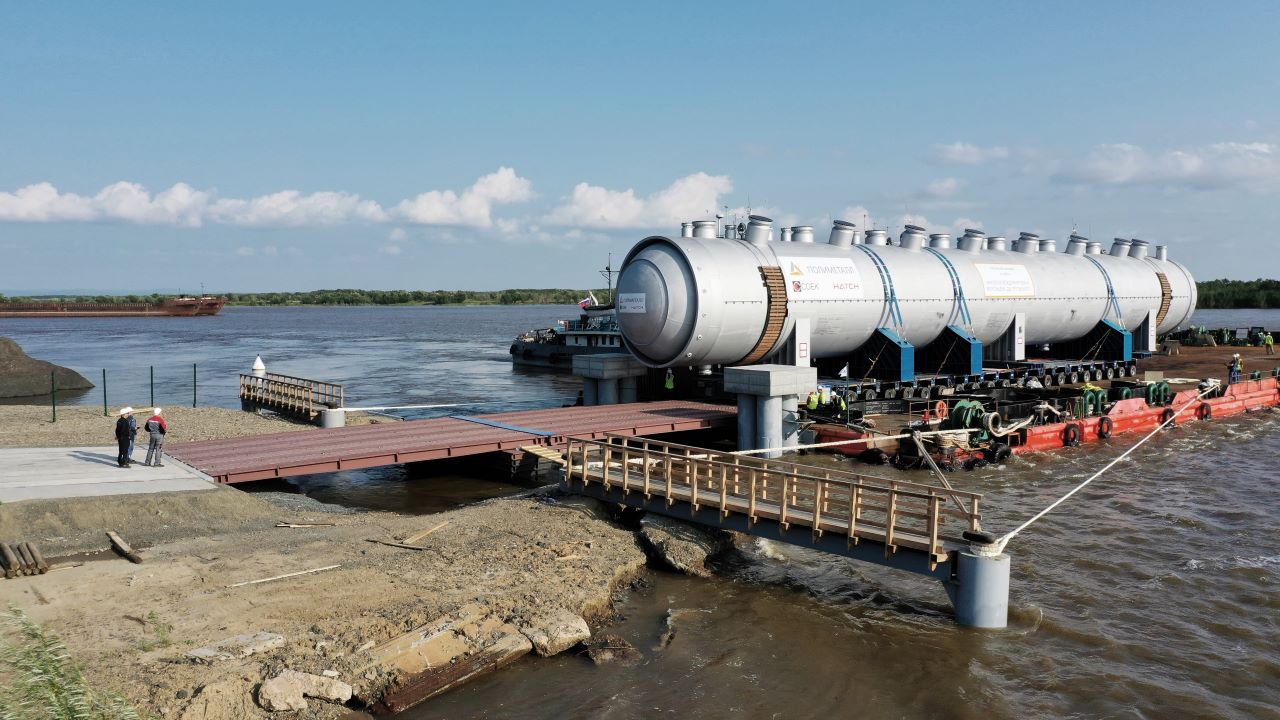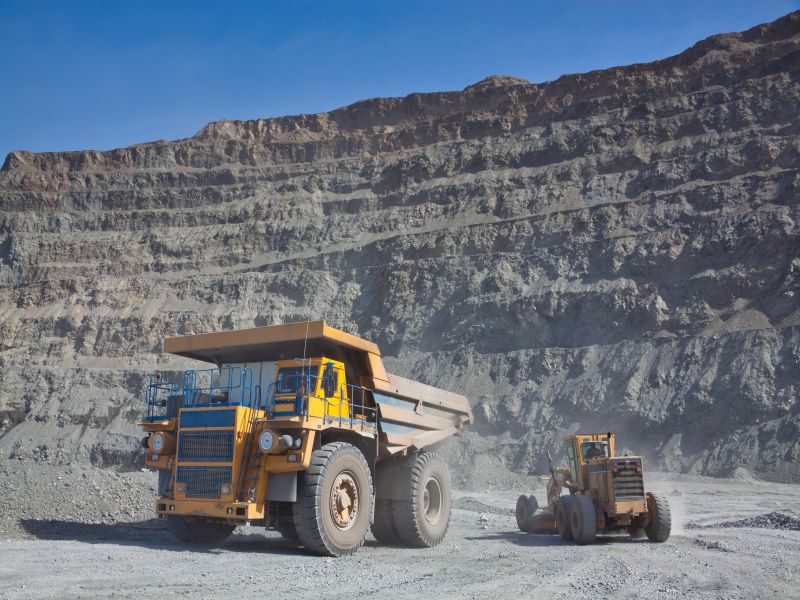The Veduga gold mine is an open-pit and underground mining operation that is currently being developed in Krasnoyarsk Krai, Russia, by Polymetal International (Polymetal), a precious metals mining company.
The mine plan includes ten years of open-pit mining, followed by 12 years of underground mining.
The project is estimated to require a capital investment of $447m between 2022 and 2029. The capital cost includes $77m for a skip shaft and underground infrastructure development between 2027 and 2029. Polymetal’s board approved the investment in November 2021 based on the results of a preliminary feasibility study (PFS) that was released in September 2021.
The construction of the gold mine is expected to commence during the third quarter (Q3) of 2022 while the first production of gold is expected to be achieved in the second quarter (Q2) of 2025.
The Veduga project location and history
The Veduga Gold project is located in the Northern Yenisey gold belt in the Krasnoyarsk region of Russia. It is situated approximately 520km north of Kranoyarsk, the capital city of Krasnoyarsk Krai, and 160km south of Severo-Eniseyskiy. The project tenement encompasses four licence plots covering a total area of approximately 18km². Discovered in 1977, the Veduga deposit was extensively explored between 1988 and 1996. Polymetal bought a 50% stake in the project from the global gold mining company AngloGold Ashanti in 2006.
The mining of oxide ore from the project commenced in 2012 while open-pit mining of sulphide ore began in 2016. Polymetal increased its stake in the project to 74.3% through the acquisition of a 31.7% stake in Amikan in 2018, which holds the licence for the property. VTB Bank, a Russian bank, announced an investment of $71m in April 2020 to acquire a 40.6% stake in Veduga.
Polymetal currently holds a 59.4% ownership interest in the project. It also has the option to increase its share in the asset to 100% by acquiring VTB’s stake within four years and nine months of signing the transaction.
Veduga geology and mineralisation
The Veduga deposit is a pyrite-arsenopyrite-antimonite type gold-sulphide mineralised formation. The high-grade refractory gold deposit comprises 28 identified ore bodies forming the western, central, eastern, intermediate, and southeast sections.
The mineralisation is present in a sub-latitudinal S-shaped shear zone with a 2.7km strike. It occurs as sulphidised quartz, quartz-sericite, sericite, and carbon metasomatites. Sulphides such as pyrite, pyrrhotite, arsenopyrite, and antimonite account for 4% to 15% of the mineralisation. The ore bodies occur as steeply dipping lenticular-tabular mineralised bodies, with lengths ranging between 70m and 550m and thicknesses of up to 77.1m.
Reserves at the Veduga project
The proven and probable mineral reserves from open-pit and underground sources were estimated to be 31.8 million tonnes (Mt) grading 3.9g/t of gold (Au) with a metal content of 4.04 million ounces (Moz), as of February 2021.
Mining methods at the Veduga gold project
Polymetal plans to operate five open pits at Veduga over ten years, between 2022 and 2031, while underground mining is expected to start in 2030 and continue until 2041, with a potential for this to be extended by another ten years.
The open-pit operations will employ conventional drill, blast, load and haul methods using electric and diesel excavators, as well as diesel trucks. The five open-pits are named the Tsentralny, Vostochny, Yugo-Vostok, Zapadny, and Strelka pits.
The open-pit mining dilution is estimated to be between 10% and 27% at zero grade, with an ore loss of 0.5%. The mining blocks of the open pits are estimated to have a strike length of 5m, a thickness of 3m, and a height of 5m, with a minimum mining width of 25m.
Open stope mining methods, followed by cemented paste backfill and skip shaft hauling of mined ore, will be used to extract the ore during the underground mining. Alternative ore transportation options will also be considered in further studies to reduce capital expenditure of the project.
The underground mining operations are envisaged to use battery-powered electric vehicles. The operations will adopt 102mm diameter blastholes, which will result in a dilution of 1.0m slices. Mining stopes will have a height of up to 25m.
Ore processing
The processing will involve flotation enrichment, followed by the carbon-in-leach process of the flotation tailings due to the resistance of the Veduga ores to the cyanide process. The mine will produce gold-containing concentrate and saturated activated carbon as the finished products. The estimated throughput of the processing plant is two million tonnes per year (Mtpa) with an average annual production rate of 200,000 ounces (oz).
The gold-containing flotation concentrate will be treated with pressure oxidation (POX) technology at Polymetal’s POX-2 facility in the city of Amursk, while the excess concentrate will be sold to smelters in China.
The concentrator facility will be used for the crushing, grinding, primary flotation, and secondary flotation of ore. It will also have a carbon-in-pulp (CIP) circuit for the cyanidation of secondary, free-milling pyrite concentrate. The primary concentrates will be thickened, filtered, and dried, before being packaged for off-site processing at Amursk POX-2.
The loaded carbon produced from the cyanidation of pyrite concentrate will be shipped to the Amursk facility for carbon stripping and dore production. The tailings will be thickened, filtered, and dry-stacked for use as backfill at the underground mine.
The POX-2 facility, which is designed to process double-refractory ore, is currently under construction, with the first production expected in Q3 2023.
Infrastructure of the Veduga project
The electricity for the project will be sourced from a federal 220kV overhead power line to the main substation. The power will feed two substations to meet the requirements of the open-pit and underground mines, and the processing plant.
The water supply for the operations will be sourced from deep bores.
Contractors involved
CSA Global, an ERM Group company, completed an audit of the ore reserve and mineral resource estimate for the Veduga project.
CSA Global, in partnership with consulting engineering group Geoconsult, analysed quality control data and mineral resource estimation procedures, block model validation and review of classification, assessment and validation of cut-off grade, and validation of mine design, and mining sequence and schedule.
The contract for the basic engineering, detailed engineering, and POX procurement support was awarded to global engineering company Hatch. The company is also supplying customised equipment for high-pressure and acidic processing.






